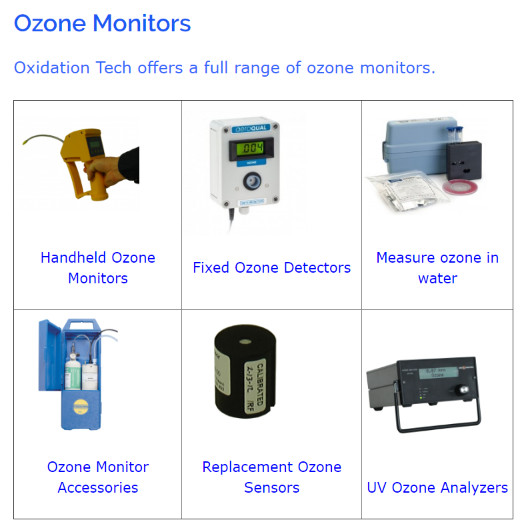There have recently been some safety regulation updates from OSHA when it comes to Ozone. Below is the information on the old guidelines, new guidelines, and information on being compliant with the new guidelines.
OLD GUIDELINES
The old OSHA guidelines were based on the permissible level of exposure to a specific amount of ozone based on different intervals of time and the type of work (example: 0.08 ppm for 8 hours per day exposure doing moderate work, and 0.05ppm for 8 hours per day exposure doing heavy work), however, this is not the case anymore.
NEW GUIDELINES
The current OSHA Permissible Exposure Limit (PEL) for an 8 hour work day (of a 40 hour work week), is 0.1 ppm time weighted average (TWA) of ozone.
It’s our understanding that in order to be in compliance with the new OSHA regulations (see 29 CFR 1910.1000), implementation of something (monitor or control device) to ensure ozone exposure to employees does not exceed the 0.1ppm TWA during the 8 hour work shift.
NEW GUIDELINES EXPLAINED/EXAMPLE
Below is the calculation that can be used for the cumulative exposure for the 8 hour work shift:
(Ca Ta+Cb Tb+. . .Cn Tn)÷8 = E
E is the equivalent exposure for the working shift. (Ozone = 0.1 ppm)
C is the concentration during any period of time (T) where the concentration remains constant.
T is the duration in hours of the exposure at the concentration C.
For example
([0.5ppm x 1 hour] + [0.02 x 2 hours] + [0.052ppm x 5 hours]) ÷ 8 = 0.1 ppm
Ozone levels can be higher than the 0.1ppm standard for a short period of time as long as low levels at other times of the day still equal out to 0.1ppm of ozone over the 8 hour shift.
For example (0.1 all day):
(0.1ppm x 8 hour) ÷ 8 = 0.1
When using this calculation the value of E should never exceed 0.1 ppm of ozone in an 8 hour work shift.
WORK PLACE REQUIREMENTS for OSHA
If monitoring equipment is not in place, then protective equipment or other means must be taken to ensure that the permissible exposure limit of 0.1 ppm ozone TWA in an 8 hour work day is meet. Another OSHA standard is any workers exposed to ozone have the right to know that they are exposed to ozone and the given exposure amount, and informed of the hazards/risks of ozone, as well as given protective measures.
In order to ensure being compliant, we would recommend use of a Ozone Monitoring/Detection Device that is connected to an alarm that triggers when ozone levels exceed the 0.1 ppm limit. That way you can monitor the length of time ozone levels are above the permissible limits and use the calculation give above to ensure the time weighted average does not exceed 0.1 ppm.

For more information on ozone safety can be found on our website.

